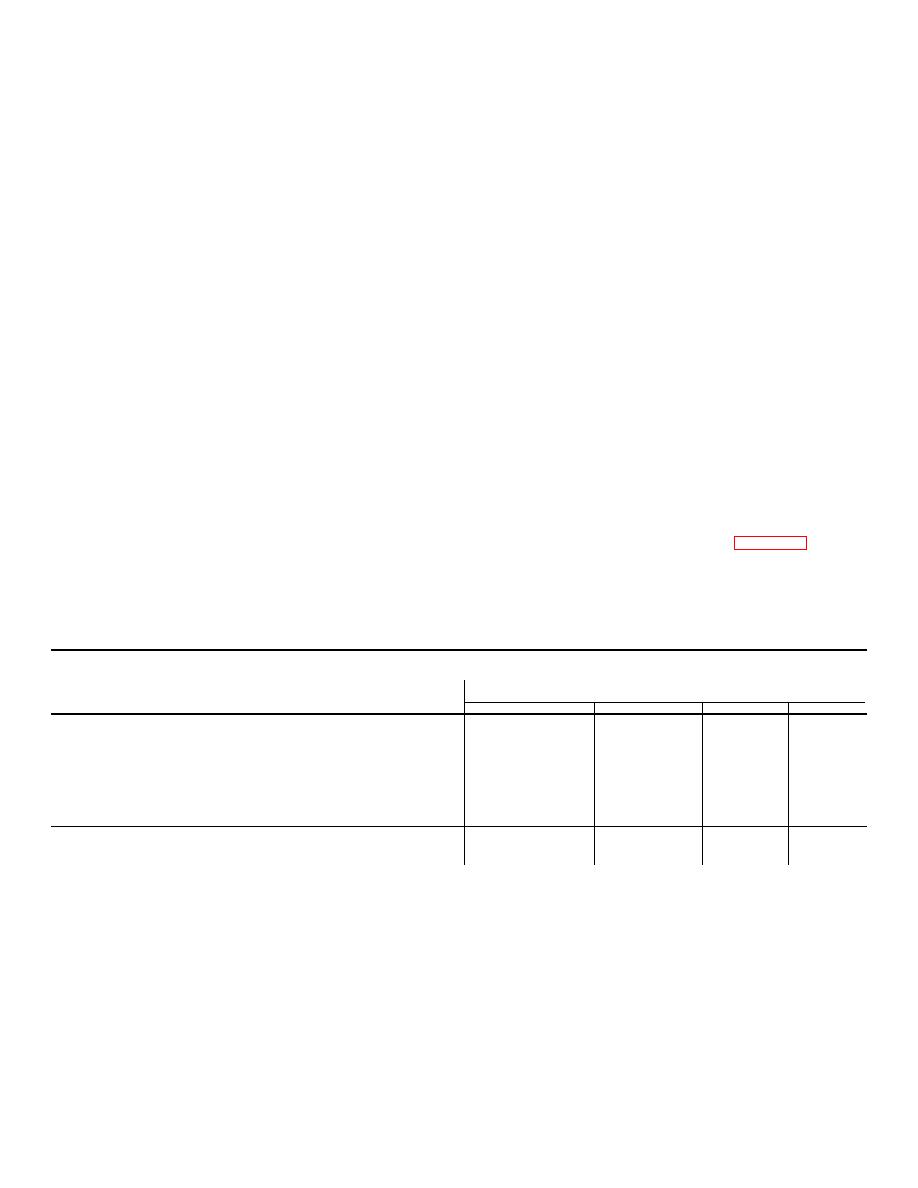 |
|||
|
|
|||
|
Page Title:
Table 2-2. Maximum Number of Channel Types in CSS |
|
||
| ||||||||||
|
|
 TM 11-5895-1123-34
b. In figure 2-5, the data is shown being patched
the 256/512 kb/s field user input requires multiple
channels.
The 256 kb/s user requires four input
through the upper units (designated No. 1) but in reality
channels and the 512 kb/s user requires eight. The
the data can be patched through the lower units
proper number of channels for the 256/512 kb/s data
(designated No. 2) or any combination of No. 1 and No.
input is selected by inserting an appropriate data card
2 units as desired or necessary.
c. The overall purpose of these units is to accept
into the multiplexer. When inserted into the multiplexer,
the 256 kb/s data card will utilize the channel position
up to 24 channels of VF, TTY, order wire (OW), and/or
where it is inserted and the next three higher numbered
digital baseband data from their appropriate processing
channels. Similarly, a 512 kb/s data card will utilize the
functions described above, and combine them into one
channel of the insertion position and the next seven
stream of data on a 70-kHz IF carrier. The 70-kHz IF
higher channels. Because the maxi mum output data
modulated carrier is the output of the CSS. This output
rate of the multiplexer is limited to 1544 kbls (1536
is patched to the Radio Subsystem (RSS) through the IF
information bits plus eight overhead
timing bits),
patch panel.
externally multiplexed data rates up to 9.9999 Mb/s (10
d. In the receive mode of operation, the modem/
Mb/s) (which is the operating limit of the modem) bypass
multiplexer processing function receives the 70-kHz IF
the multiplexer and are directly applied to the modem,
signal from the RSS, removes the stream of data from
as shown in figure 2-5. Digital data users of the 50 kb/s,
the 70-kHz IF carrier, and then separates the data
20 kb/s, and 256/512 kb/s rates are patched into
stream into 24 separate channels. The 24 channels are
channels one through twelve only, while the OW, TTY,
then patched back through the TTY, VF, OW, and/or
and 12 VF channels can be patched into any of the 24
digital baseband circuits for final preparation to be sent
available input channels. It is normal operating practice
to the field users.
to reserve one VF channel for orderwire.
The
e. To initially perform the transmit process, data is
OW is usually used as a
communication means
patched through the VF and data patch panels to the
between operators at each end of the satellite link, but
input channels of the AN/FCC-98(V) multiplexer.
may also be patched to subscribers by way of the VF
f. The multiplexer is capable of operating in four
patch panel. The dedication of one VF channel for OW
different channel modes; three, six, twelve or twenty four
may be preempted when warranted by heavy demand
at the corresponding output rates of 192, 384, 768, and
for the availability of VF channels. Table 2-2 lists the
1544 kb/s respectively. Each of the 24 avail able
maximum number of channel types that may be used in
channels can support up to 64 kb of VF or digital data.
each of the four data rate modes of the mission bit
Data rates of 20, or 50 kb/s therefore only re quire one
stream.
channel
for
each
field
user
input,
while
Table 2-2. Maximum Number of Channel Types in CSS
(Not Simultaneous)
Mission Bit Stream
192 kb/s
384 kb/s
768 kb/s
1544 kb/s
3 chan
6 chan
12 chan
24 chan
VOICE CHANNELS (includes 1 order wire
3 max.
6 max.
12 max.
14 max.
and possibly 1 FSK teletype group):
50 kb/s asynchronous
2 max.
2 max.
2 max.
2 max.
256 kbls synchronous
NO
NO
NO
1 max.
512 kb/s synchronous
NO
NO
NO
1 max.
0-20 kb/s asynchronous
3 max.
4 max.
4 max.
4 max.
Prior to referring to table 2-3, which lists full loading
into channel 12 which contains the 512 kb/s data card
examples of the different types of traffic at the different
required by the multiplexer for this input bit rate.
data rates, the following should be noted to avoid
The 512 kb/s data card will not only utilize its own
confusion: In example K of table 2-3, it appears that the
channel (12), but also the next seven higher numbered
512 kb/ s data input is in conflict with the previous
channels (13 through 19) Therefore, although 512 db/s
statement that the signals from digital data users are
input is patched into channel 12, it overflows into
patched into channels one through twelve only In
channels 13 through 19.
actuality, he 512 kb/s data input is being patched only
2-10
|
|
Privacy Statement - Press Release - Copyright Information. - Contact Us |